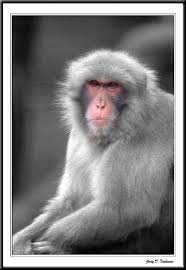Jupiter's appearance is a tapestry of beautiful colors and atmospheric features. Most visible clouds are composed of ammonia. Water vapor exists deep below and can sometimes be seen through clear spots in the clouds. The planet's "stripes" are dark belts and light zones created by strong east-west winds in Jupiter's upper atmosphere.
From the Woodland Cubs- the things we do in our Nurture Class -Miss Claudine and Miss Claudette
Saturday, April 27, 2013
Jupiter
Jupiter's appearance is a tapestry of beautiful colors and atmospheric features. Most visible clouds are composed of ammonia. Water vapor exists deep below and can sometimes be seen through clear spots in the clouds. The planet's "stripes" are dark belts and light zones created by strong east-west winds in Jupiter's upper atmosphere.
The moon
Our Moon makes Earth a more livable planet by moderating our home planet's wobble on its axis, leading to a relatively stable climate, and creating a rhythm that has guided humans for thousands of years. The Moon was likely formed after a Mars-sized body collided with Earth and the debris formed into the most prominent feature in our night sky.
A treat for my budding astronauts.
Seeing so many posts about space, here's a slide show you will enjoy :)
http://www.sparknotes.com/mindhut/2013/04/23/the-top-10-coolest-astronauts-ever/slide/11
http://www.sparknotes.com/mindhut/2013/04/23/the-top-10-coolest-astronauts-ever/slide/11
Snow Monkey
Snow monkeys are famous for their intelligence and social behavior. They use tools,wash their food, and have a complex system of communication

Jupiter
Jupiter, the most massive planet in our solar system -- with dozens of moons and an enormous magnetic field forms a kind of miniature solar system. Jupiter does resemble a star in composition, but it did not grow big enough to ignite. The planet's swirling cloud stripes are punctuated by massive storms such as the Great Red Spot, which has raged for hundre of years.

Uranus
Uranus is the only giant planet whose equator is nearly at right angles to its orbit. A collision with an Earth-sized object may explain Uranus' unique tilt. Nearly a twin in size to Neptune, Uranus has more methane in its mainly hydrogen and helium atmosphere than Jupiter or Saturn. Methane gives Uranus its blue tint.

The sun
The sun is a star, a hot ball of glowing gases at the heart of our solar system. Its influence extends far beyond the orbits of distant Neptune and Pluto. Without the sun's intense energy and heat, there would be no life on Earth. And though it is special to us, there are billions of stars like our sun scattered across the Milky Way galaxy

Men on the Moon
The first men to land on the Moon were Neil Armstrong and Buzz Aldrin in July 1968. The most recent was Eugene Cernan in December 1972.

Friday, April 26, 2013
Mars
Mars is a cold desert world. It is half the diameter of Earth and has the same amount of dry land. Like Earth, Mars has seasons, polar ice caps, volcanoes, canyons and weather, but its atmosphere is too thin for liquid water to exist for long on the surface. There are signs of ancient floods on Mars, but evidence for water now exists mainly in icy soil and thin clouds.
First man in space
This is the first man in space he use to go around the world to meet different people in China,Singapore,England,Germany and all of the world he use to go .He use to go with a rocket . In side the rocket is very big allot of people go to worlds so they can discavore new things.
Chen from China
Tuesday, April 23, 2013
Monday, April 22, 2013
Subscribe to:
Posts (Atom)
Subscribe To




















